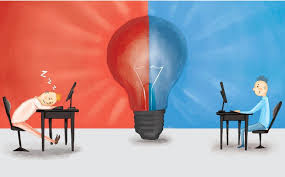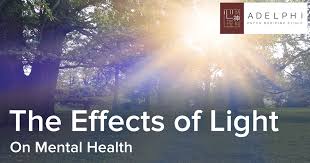
How Lighting Affects Your Mental Health (and What to Do About It)
Lighting might seem like a simple, everyday detail — but it has a profound impact on your mental health. The type, intensity, and timing of light exposure influence your mood, energy, sleep, and even cognitive function. In fact, poor lighting can contribute to anxiety, depression, and fatigue.
Understanding how lighting affects your brain and emotions is the first step toward creating an environment that supports your mental well-being. Here’s what the science says — and practical tips to harness light for a healthier mind.
The Science Behind Light and Mental Health
Your brain relies on cues from natural light to regulate your circadian rhythm—your internal body clock that controls sleep-wake cycles, hormone production, and mood.
-
Blue light, especially from the sun, signals your brain to stay alert and awake.
-
Melatonin, the “sleep hormone,” is suppressed by bright light, helping you stay awake during the day and fall asleep at night.
-
When natural light is limited, such as in winter months or in windowless rooms, your circadian rhythm can get disrupted, leading to mood disorders like Seasonal Affective Disorder (SAD).
How Poor Lighting Hurts Your Mental Health
-
Increased risk of depression and anxiety: Insufficient daylight or harsh artificial lighting can exacerbate feelings of sadness or worry.
-
Fatigue and cognitive fog: Poor lighting strains your eyes and brain, reducing focus and energy.
-
Sleep disturbances: Exposure to artificial blue light from screens at night delays melatonin release, causing insomnia or poor sleep quality.
How to Use Lighting to Boost Your Mental Health
1. Maximize Natural Light
Spend time outside every day, especially in the morning, to reset your circadian rhythm and boost serotonin — the “feel-good” neurotransmitter.
2. Optimize Indoor Lighting
-
Use bright, full-spectrum bulbs that mimic natural daylight during the day.
-
Position your workspace near windows if possible.
-
Avoid harsh overhead fluorescents; instead, opt for adjustable lamps that provide soft, indirect light.
3. Limit Blue Light at Night
-
Reduce screen time 1-2 hours before bed.
-
Use blue light filters on devices or wear blue light-blocking glasses.
-
Switch to warm, dim lighting in the evening to encourage melatonin production.
4. Consider Light Therapy
For those affected by Seasonal Affective Disorder or working in low-light environments, light therapy boxes simulate sunlight and can improve mood and energy.
Small Changes, Big Impact
-
Open curtains immediately upon waking to let in sunlight.
-
Take short outdoor breaks during workdays.
-
Use smart lighting systems that adjust color temperature based on time of day.
Final Thoughts
Lighting does far more than brighten your space—it profoundly shapes your mental health and daily rhythm. By tuning into how light affects your mood and energy, you can create an environment that supports better sleep, sharper focus, and a happier mind.
Light up your life wisely—and watch your mental health glow.
